 W
WThe bronchitis kettle, typified by a long spout, was used in the nineteenth and twentieth centuries to moisten the air for a sufferer of bronchitis, and was considered to make it easier to breathe for the patient. Sometimes menthol was added to the water to relieve congestion. The water was boiled on the fireplace in the room, or above a spirit lamp, or, in the twentieth century, by electricity. Sometimes the kettle was boiled within a tent placed around the patient.
 W
WA bulldog forceps, clamp or serrefine is a type of forceps which is used in surgery. It has serrated jaws and a spring action so that it will grip and hold sutures, tissues or vessels. The spring may be weak or the jaws sheathed in a soft material so that the item being gripped is not crushed too severely.
 W
WA curette is a surgical instrument designed for scraping or debriding biological tissue or debris in a biopsy, excision, or cleaning procedure. In form, the curette is a small hand tool, often similar in shape to a stylus; at the tip of the curette is a small scoop, hook, or gouge. The verb to curette means "to scrape with a curette", and curettage is treatment that involves such scraping.
 W
WDebakey forceps are a type of atraumatic tissue forceps used in vascular procedures to avoid tissue damage during manipulation. They are typically large, and have a distinct coarsely ribbed grip panel, as opposed to the finer ribbing on most other tissue forceps.
 W
WThe Deltec Cozmo and CozMore were a series of insulin pumps made by Smiths Medical used to treat diabetes. In 2009, the company announced that it would to stop selling the Cozmo. The pump was used to deliver basal insulin continuously, and bolus insulin at meal times by pressing the buttons. The Deltec Cozmo used a 300 unit cartridge to store the insulin compared to the 200 unit cartridge of the current Animas Ping. The CozMore is a pump-meter combination consisting of a normal Cozmo insulin pump and a thin black meter that was placed over the back. The two devices connected through infrared signals. The two devices had separate power sources, but the meter could not function on its own as it displayed the information on the screen of the insulin pump.
 W
WDilator or dilatator is a medical term with a number of uses, including:A surgical instrument or medical implement used to induce dilation, that is, to expand an opening or passage such as the cervix, urethra, esophagus, or vaginal introitus. A pharmacological treatment used to induce dilation, such as cervical dilation, vasodilation, or pupillary dilation. For example, a bronchodilator. A muscle which causes dilation of a part, for example, the iris dilator muscle or the dilator naris muscle.
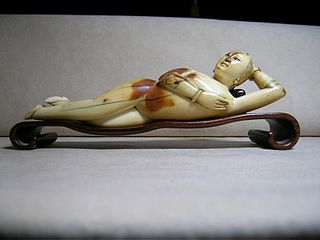 W
WA Doctor's lady is a small figurine depicting a nude or nearly nude female, usually said to have been used by traditional Chinese male physicians to allow a female patient to indicate the location of her discomfort in a modest fashion, without showing or pointing to her own body. "Doctor's ladies" may be made from various materials such as ivory, resin, semiprecious stone, or soapstone, and are typically from 10 to 25 cm long, often with a base in the form of a couch. Examples are known from the Ming and Qing periods. Smaller amulets of the same design are common, but many of these are probably netsuke or ornamental amulets, not designed for practical use.
 W
WA drip chamber is a device used to allow gas to rise out from a fluid so that it is not passed downstream. It is commonly employed in delivery systems of intravenous therapy and acts to prevent air embolism.
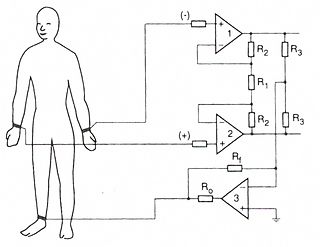 W
WA driven right leg circuit or DRL circuit is an electric circuit that is often added to biological signal amplifiers to reduce common-mode interference. Biological signal amplifiers such as ECG (electrocardiogram) EEG (electroencephalogram) or EMG circuits measure very small electrical signals emitted by the body, often as small as several micro-volts. Unfortunately, the patient's body can also act as an antenna which picks up electromagnetic interference, especially 50/60 Hz noise from electrical power lines. This interference can obscure the biological signals, making them very hard to measure. Right leg driver circuitry is used to eliminate interference noise by actively cancelling the interference.
 W
WAn écraseur is a surgical instrument containing a chain or wire loop that is used to encircle and sever a projecting mass of tissue by gradual tightening of the chain or loop.
 W
WAn electronic apex locator is an electronic device used in endodontics determine the position of the apical constriction and thus determine the length of the root canal space. The apex of the root has a specific resistance to electrical current, and this is measured using a pair of electrodes typically hooked into the lip and attached to an endodontic file.
 W
WAn endoscope is an illuminated optical, typically slender and tubular instrument used to look deep into the body and used in procedures called an endoscopy. Endoscopes use tubes which are only a few millimeters thick to transfer illumination in one direction and high-resolution images in real time in the other direction, resulting in minimally invasive surgeries. "Endo" is Greek for "within" while "scope" comes from the Greek word "skopos" meaning to target or look out. It is used to examine the internal organs like the throat or esophagus. Specialized instruments are named after their target organ. Examples include the cystoscope (bladder), nephroscope (kidney), bronchoscope (bronchus), arthroscope (joints) and colonoscope (colon), and laparoscope. They can be used to examine visually and diagnose, or assist in surgery such as an arthroscopy.
 W
WEsmarch bandage in its modern form is a narrow soft rubber bandage that is used to expel venous blood from a limb (exsanguinate) that has had its arterial supply cut off by a tourniquet. The limb is often elevated as the elastic pressure is applied. The exsanguination is necessary to enable some types of delicate reconstructive surgery where bleeding would obscure the working area. A bloodless area is also required to introduce local anaesthetic agents for a regional nerve block. This method was first described by Augustus Bier in 1908.
 W
WGauze sponges are disposable medical supplies commonly used in medicine and surgery. They are ordinarily made of gauze and are used to absorb blood and other fluids as well as clean wounds. When used in surgery, they are called surgical sponges.
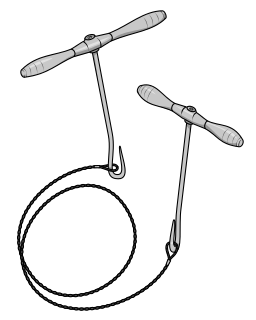 W
WA Gigli saw is a flexible wire saw used by surgeons for bone cutting. A Gigli saw is used mainly for amputation, where the bones have to be smoothly cut at the level of amputation.
 W
WGlobus Medical is a publicly traded medical device company headquartered in Audubon, Pennsylvania. Globus is focused on the design, development, and commercialization of products that enable surgeons to promote healing in patients with musculoskeletal disorders.
 W
WGoldmann Applanation Tonometer is an instrument that is based on Imbert-Fick law. It is considered to be the gold standard instrument for measurement of Intraocular pressure (IOP).
 W
WHigh-resolution manometry (HRM) is a gastrointestinal motility diagnostic system that measures intraluminal pressure activity in the gastrointestinal tract using a series of closely spaced pressure sensors. For a manometry system to be classified as "high-resolution" as opposed to "conventional", the pressure sensors need to be spaced at most 1 cm apart. Two dominant pressure transduction technologies are used: solid state pressure sensors and water perfused pressure sensors. Each pressure transduction technology has its own inherent advantages and disadvantages. HRM systems also require advanced computer hardware and software to store and analyze the manometry data.
 W
WThe Hippocratic bench or scamnum was a device invented by Hippocrates which used tension to aid in setting bones. It is a forerunner of the traction devices used in modern orthopedics, as well as of the rack, an instrument of torture.
 W
WA hobcart was a type of mobility device designed in the late 1960s by Dr. Steven Perry of Albrighton, Shropshire, UK. In his practice he had two young children, both of whom had spina bifida. He considered that the wheelchairs the children were provided with were liable to set them apart from other children of their age, so set about designing a mobility device, that would look like a go-kart. The end result was the hobcart, which when it was first made, was produced at a local borstal. The idea behind this was to try to provide the inmates of the borstal the opportunity to be involved in a project which they could see was doing some good. Hobcarts were still being made into the 1980s.
 W
WHose barbs are cylindrical pieces or parts for attaching and securing of hoses (tubing). The barb-like rings on the cylindrical piece allow for an easy push-connection of flexible-plastic or rubber tubing that is not so easily disconnected. Hose barbs are used in machine perfusion and chemistry laboratory equipment. Hose barb fittings are small curved, bent or T-shaped pipes, hoses or tubes with hose barbs on at least one side used to join two or more pieces of piping together. Hose barbs are commonly used in the agriculture industry to connect anhydrous ammonia (NH3) hoses.
 W
WHydrogel dressings use a hydrogel pad in contact with the wound. The gel is mostly water, in a hydrophilic polymer matrix. They are designed to keep the wound slightly moist, releasing water or absorbing exudate. In a slightly moist environment, rodent skin heals faster than in a dry environment, from both cuts and partial-thickness burns. There exists little evidence comparing hydrogel dressing to other advanced dressings in humans.
 W
WAn incentive spirometer is a medical device used to help patients improve the functioning of their lungs. It is a simplified spirometer provided to patients who have had any surgery that might jeopardize respiratory function, particularly surgery to the lungs, but also commonly to patients recovering from cardiac or other surgery involving extended time under anesthesia and prolonged in-bed recovery. The incentive spirometer also is issued to patients recovering from pneumonia or rib damage to help minimize the chance of fluid build-up in the lungs. It may be used as well by wind instrument players, who want to improve their air flow.
 W
WThe Jamshidi needle is a trephine needle for performing bone marrow biopsy, whereby a cylindrical sample of tissue, a core biopsy specimen, is obtained. It is a cylindrical needle with a tapered cutting tip. The tapered end reduces the potential of crush artifact. It is the most commonly used needle for performing bone marrow biopsies. The device is named for its inventor Khosrow Jamshidi who is an Iranian physician.
 W
WThe jugum penis or pollutions ring was an anti-masturbatory device developed in the 18th century. It consisted of a steel clip with serrated teeth that could be attached to the penis to deter its unwanted erection. It is one of many devices from the 1700s designed to prevent masturbation and to cure what was then claimed to be an illness called spermatorrhoea.
 W
WA keratoscope, sometimes known as Placido's disk, is an ophthalmic instrument used to assess the shape of the anterior surface of the cornea. A series of concentric rings is projected onto the cornea and their reflection viewed by the examiner through a small hole in the centre of the disk. A regular-shaped cornea should show equally spaced symmetric reflections. If the patient is suffering from astigmatism or from a corneal dystrophy, the rings will be distorted.
 W
WA leucotome or McKenzie Leucotome is a surgical instrument used for performing leucotomies and other forms of psychosurgery.
 W
WThe Liston knife is a type of knife used in surgical amputation.
 W
WMagill forceps are angled forceps used to guide a tracheal tube into the larynx or a nasogastric tube into the esophagus under direct vision. They are also used to remove foreign bodies. These forceps are named after the Irish-born anaesthetist Ivan Magill.
 W
WMagnetic resonance cholangiopancreatography (MRCP) is a medical imaging technique that uses magnetic resonance imaging to visualize the biliary and pancreatic ducts in a non-invasive manner. This procedure can be used to determine if gallstones are lodged in any of the ducts surrounding the gallbladder.
 W
WMetzenbaum scissors are surgical scissors designed for cutting delicate tissue and blunt dissection. The scissors come in variable lengths and have a relatively long shank-to-blade ratio. They are constructed of stainless steel and may have tungsten carbide cutting surface inserts. The blades can be curved or straight, and the tips are usually blunt. This is the most common type of scissors used in organ-related operations.
 W
WRF shielding for MRI rooms is necessary to prevent noise of radio frequency from entering into the MRI scanner and distorting the image. The three main types of shielding used for MRIs are copper, steel, and aluminum. Copper is generally considered the best shielding for MRI rooms.
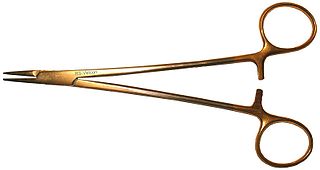 W
WA needle holder, also called needle driver, is a surgical instrument, similar to a hemostat, used by doctors and surgeons to hold a suturing needle for closing wounds during suturing and surgical procedures.
 W
WAn Ommaya reservoir is an intraventricular catheter system that can be used for the aspiration of cerebrospinal fluid or for the delivery of drugs into the cerebrospinal fluid. It consists of a catheter in one lateral ventricle attached to a reservoir implanted under the scalp. It is used to treat brain tumors, leukemia/lymphoma or leptomeningeal disease by intrathecal drug administration. In the palliative care of terminal cancer, an Ommaya reservoir can be inserted for intracerebroventricular injection (ICV) of morphine.
 W
WA Kegel perineometer or vaginal manometer is an instrument for measuring the strength of voluntary contractions of the pelvic floor muscles. Arnold Kegel (1894–1972) was the gynecologist who invented the Kegel perineometer and Kegel exercises. This followed the observation that muscles of the pelvic floor inevitably weakened following the trauma of childbirth. Ascertaining the air pressure inside the vagina by insertion of a perineometer, while requesting the woman to squeeze as hard as possible, indicates whether or not she would benefit from strengthening the vaginal muscles using the Kegel exercises. More modern electromyograph (EMG) perineometers, which measure electrical activity in the pelvic floor muscles, may be more effective in this purpose. Assessment of pelvic floor strength during gynaecological examination may help to identify women with fascial defects of the pelvic floor, as well as those at risk of genital prolapse or urinary incontinence. Both the Kegel perineometer and a digital examination are effective and concordant in their results in this assessment.
 W
WA Pleximeter is a device used in percussion, as part of a clinical examination, to absorb the energy generated by the strike from the plexor.
 W
WA pneumograph, also known as a pneumatograph or spirograph, is a device for recording velocity and force of chest movements during respiration.
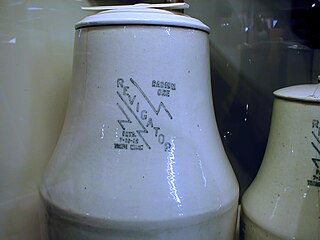 W
WThe radium ore Revigator was a pseudoscientific medical device consisting of a ceramic water crock lined with radioactive materials. It was patented in 1912 by R. W. Thomas. Thomas was working at the time as a stock salesman in Arizona but, by 1923, had moved to southern California to begin manufacture of his patent. In 1924, following several successful advertisement campaigns that left him unable to keep up with demand, he sold his operation to Dow-Herriman Pump & Machinery Company, selling thousands of the devices in the 1920s and 1930s.
 W
WA rectal or anal dilator is a medical device similar to a speculum designed to open and relax the internal/external anal sphincter and rectum in order to facilitate medical inspection or relieve constipation. One early version of a rectal dilator was Dr. Young's Ideal Rectal Dilators, invented in 1892.
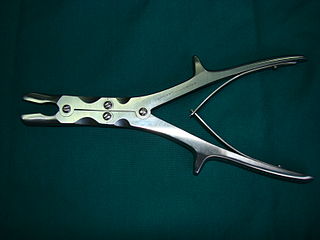 W
WA rongeur is heavy-duty surgical instrument with a sharp-edged, scoop-shaped tip, used for gouging out bone. Rongeur is a French word meaning rodent or 'gnawer'. A rongeur can be used to open a window in bone, often in the skull, in order to access tissue underneath. They are used in neurosurgery, pediatric surgery, maxillofacial surgery, and orthopedic surgery to expose areas for operation.
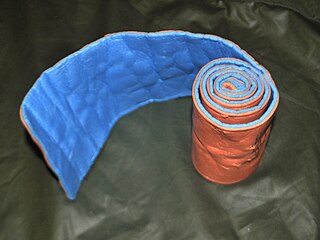 W
WThe SAM splint is a compact, lightweight, highly versatile device designed for immobilizing bone and soft tissue injuries in emergency settings. It consists of a layer of .016 inches (0.41 mm) strips of soft aluminum, with a polyethylene closed-cell foam coating.
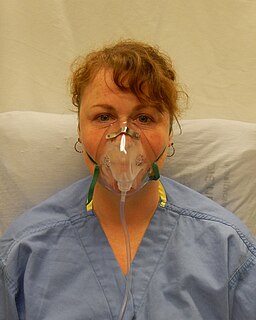 W
WThe simple face mask (SFM) is a basic disposable mask, made of clear plastic, to provide oxygen therapy for patients who are experiencing conditions such as chest pain, dizziness, and minor hemorrhages. This mask is only meant for patients who are able to breathe on their own, but who may require a higher oxygen concentration than the 21% concentration found in ambient air. Patients who are unable to breathe on their own are placed on a medical ventilator instead. The simple face mask can deliver higher flow rates than nasal cannula for an FiO2 of 40–60% oxygen. Nasal cannula and simple face masks are described as low flow delivery systems.
 W
WA stripper, or tube stripper, is a medical tool used for removing air or liquid from rubber tubes, such as those used for infusion or connecting bags used when blood is collected and processed in a blood bank. Its design is similar to a pair of pliers, but the jaws do not quite close and have cylinders that can be rolled along the tube similar to the mechanism of a peristaltic pump. A stripper may be used, for instance, to move blood that remains in the tube at the end of a blood collection into the bag, thus avoiding wastage.
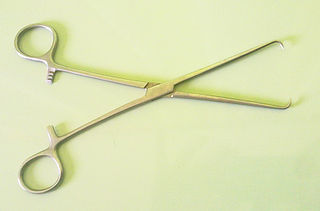 W
WA tenaculum is a surgical instrument, usually classified as a type of forceps. It consists of a slender sharp-pointed hook attached to a handle and is used mainly in surgery for seizing and holding parts, such as blood vessels.
 W
WTenotomy scissors are surgical scissors used to perform delicate surgery. They can be straight or curved, and blunt or sharp, depending upon necessity. This equipment can be used in many surgical specialties, in particular delicate operations in ophthalmic surgery, oral and maxillofacial surgery, or in neurosurgery.
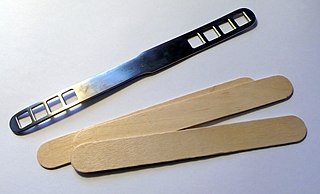 W
WA tongue depressor is a tool used in medical practice to depress the tongue to allow for examination of the mouth and throat. The most common modern tongue depressors are flat, thin, wooden blades, smoothed and rounded at both ends, but, historically, tongue depressors have been made of a variety of materials. Since they are inexpensive and difficult to clean because of their porous texture, wooden tongue depressors are labeled for disposal after a single usage.
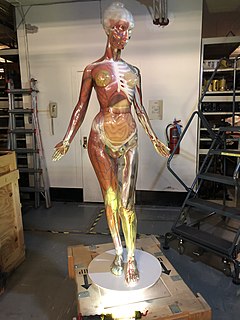 W
WThe Transparent Anatomical Manikin (TAM) is a three-dimensional, transparent model of a human being, created for medical instructional purposes. TAM was created by designer Richard Rush in 1968. It consisted of a see-through reproduction of a female human body, with various organs being wired so specific body systems would light up on command, on cue with a pre-recorded educational presentation.
 W
WTrauma shears, also known as Tuff Cuts, are a type of scissors used by paramedics and other emergency medical personnel to quickly and safely cut clothing from injured people. They usually consist of a plastic handle with a metal blade, which is traditionally bent at about 150 degrees, giving them an unusual appearance as compared to normal scissors, and also a longer "lever arm".
 W
WA trephine is a surgical instrument with a cylindrical blade. It can be of one of several dimensions and designs depending on what it is meant to be used for. They may be specially designed for obtaining a cylindrically shaped core of bone that can be used for tests and bone studies, cutting holes in bones or for cutting out a round piece of the cornea for eye surgery.
 W
WTulle gras or tulle gras dressing is a type of bandage commonly used in France, although the term is also used in English. It consists of fabric impregnated with soft paraffin oil, balsam of Peru, and olive oil, which prevents its sticking to wounds, but means that it needs to be used in combination with another absorbent dressing.
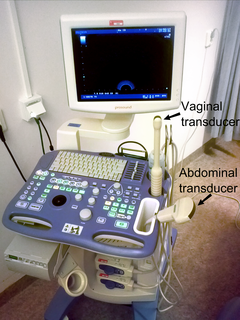 W
WVaginal ultrasonography is a medical ultrasonography that applies an ultrasound transducer in the vagina to visualize organs within the pelvic cavity. It is also called transvaginal ultrasonography because the ultrasound waves go across the vaginal wall to study tissues beyond it.
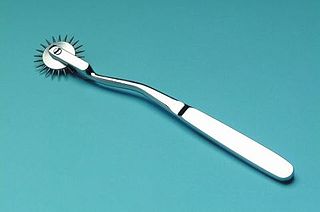 W
WA Wartenberg wheel, also called a Wartenberg pinwheel or Wartenberg neurowheel, is a medical device for neurological use. Robert Wartenberg (1887–1956) designed the wheel to test nerve reactions (sensitivity) as it rolled systematically across the skin. A Wartenberg wheel is generally made of stainless steel with a handle of approximately 7 inches (18 cm) in length. The wheel, which has evenly spaced radiating sharp pins, rotates as it is rolled across the flesh. A disposable plastic version is available. Because of hygienic concerns, these devices are rarely used for medical purposes any more.